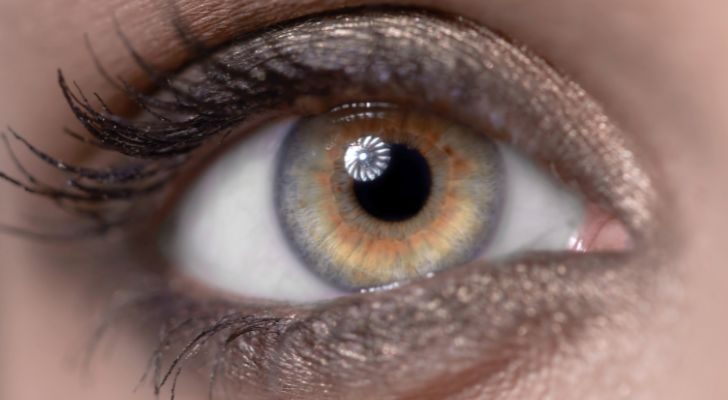The color hazel is absolutely gorgeous, so it should come as no surprise that it’s one of the most prized eye colors!
But did you know that some of those with this eye color might not be that lucky after all?
Read on to discover why, and stick around to learn all about this beautiful color, including its use in art and literature!
The color hazel was first used in print by William Shakespeare in 1592, who compared one of his characters’ eyes to the color of ripe hazelnuts
Painters during the Renaissance period used the color hazel to portray gold and even the hairs of angels, associating the color with things like idealism, reputation, wealth, and wisdom!
Around the 1960s, people started referring to a warm, earthy brown color as hazel because it resembles hazelnuts.
One commonly accepted hex code for the color hazel is #C8B575. Regarding its RGB (red, green, and blue) color model for computer graphics, you’ll need 200 units of red, 181 units of green, and 117 units of blue to achieve this particular color.
Hazel is one of the go-to paint colors when creating a warm environment. According to interior designers, it’s a timeless color that compliments various types of furniture!
Despite blue being the most common color for zircon, December’s birthstone, this gemstone can also have a variety of colors, one of which is hazel!
The color hazel is not one definite color, like yellow, blue, or red. It’s extremely ambiguous and is almost exclusively used to describe eye colors.
8 Bonus Facts About Hazel Eyes

Hazel eyes typically have a combination of brown, green, and gold pigmentation, although hints of amber or blue can sometimes occur.
There’s a lot of variety of color between different hazel eyes. Typically, they tend to be tinged with brown or green.
Hazel eyes can appear in different colors under different lighting conditions. This explains why hazel eyes are referred to as the chameleon of eye colors!
Only 5% of people worldwide have hazel eyes. It’s often confused with brown eyes, the most common eye color in the world, which over 79% of people have.
Cancer Causes and Control, a peer-reviewed medical journal, published a 2022 study wherein researchers discovered that out of 35,000 men, those with hazel (or other lighter colors like green and blue) eyes had a higher chance of getting skin cancer.
Some people believe that those with hazel eyes are special, determined, and filled with positivity! In addition, people with hazel eyes are said to possess personality traits such as compassion and courage.
Out of the total global population with hazel eyes, approximately 18% reside in the United States. Brazil and Spain also have high numbers of hazel-eyed citizens.
Some examples of celebrities with hazel eyes are Emma Roberts, Jason Statham, and Zendaya!
From its complexity to the eye color’s rarity, the color hazel is truly one-of-a-kind.
Its Renaissance roots and modern-day allure offer a glimpse into a world of complexity and intrigue.
Whether you’re admiring its varied shades or contemplating its cultural significance, hazel invites us to delve deeper into its captivating story.
So, the next time you gaze into a pair of hazel eyes, remember that there’s more to hazel than meets the eye!


















